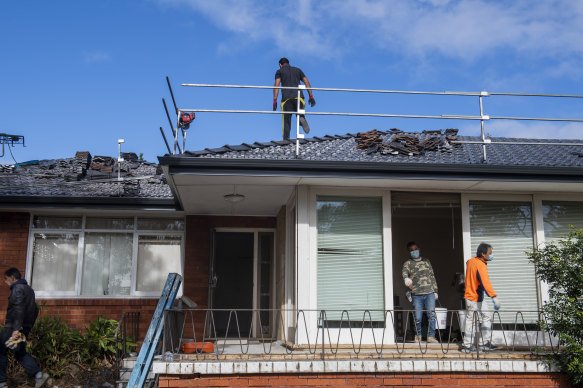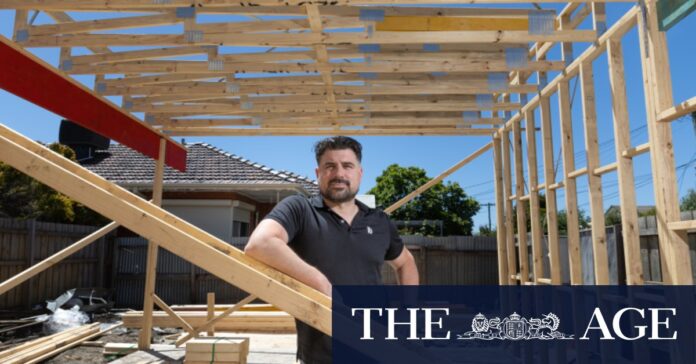[ad_1]
“It’s all about having a dialogue with them, asking if there’s an alternative … and being open to what they advise.”

Planning and compromise are key when it comes to renovating on a budget. Credit: Louise Kennerley
Data from Master Builders Australia (MBA) shows the typical cost of home alterations and additions increased by 37.1 per cent in the five years to September 2023.
That was largely due to a sharp increase in building material costs since the pandemic, tradie shortages, and other labour supply difficulties, an MBA spokesperson said.
The latest Cordell Construction Cost Index further shows a reacceleration in the quarterly pace of growth for national construction costs, up 0.8 per cent over the December quarter, leaving them 2.9 per cent higher over the year.
To outsmart growing costs, it was important to check how much certain material choices might add to the future sale price of a home, Angelini said.
“If it’s your own home, that option of Italian marble rather than local materials might be an emotional one, but it could be worth checking its potential value with an agent.”
Some renovators need to trim back plans for major work that could prove expensive, but add little value, experts warn.
Property valuer Belinda Botzolis, founder of Add Valuer, believes too many decide to relocate kitchens or reconfigure bathrooms, resulting in huge plumbing and electricity rewiring costs. She suggests working out the end value of any renovations, then working backwards to see how much they will cost.
“That kind of work can be very expensive, and it’s money you won’t necessarily get back from the market,” she said. “It’s worth taking a second look at what you’ve already got and seeing if you can work with that.”
She added the cost of larger structural changes, such as knocking walls to create open-plan living or building up, could at times outweigh the value added, and urged renovators to carefully consider their options, as well as what might appeal to future buyers.
Loading
“Going up is the most expensive rate per square metre you can do,” she said. “The danger is also that homes can feel disjointed.”
When it comes to materials, substituting cheaper options for top-end products can also be a good tactic, as long as the final quality is still assured, said Archicentre Australia director Peter Georgiev.
“Floor tiles from Italy or Germany might look beautiful, but you might not be able to tell the difference between others that come from Malaysia or Indonesia and cost a third of the price,” he said.
“You want to go with something that looks good but is also practical and fit for purpose and works for your budget.”
Georgiev also recommends that home owners look to a lump-sum contract – one that sets a predetermined fixed cost for construction work – rather than a cost-plus contract, which provides reimbursement for all the costs incurred, plus a fee for overheads and profit.
“The best way to save money is sticking to a lump-sum contract,” he said. “A cost-plus contract can be fraught. With solid specifications, the builder has every chance of receiving accurate end-cost quotes.”
Having a well-thought-out plan and a team of good professionals was also key, said Greg Kearney, managing director of construction company BBT Australia.
“Ask people for personal recommendations and make sure you look at their work and check it would also suit you, and trust your gut instinct. Then, if you get your plans put down on paper in plenty of time before the start, you won’t be panicked and you’ll have enough time to get everything done.”
[ad_2]
Source link


